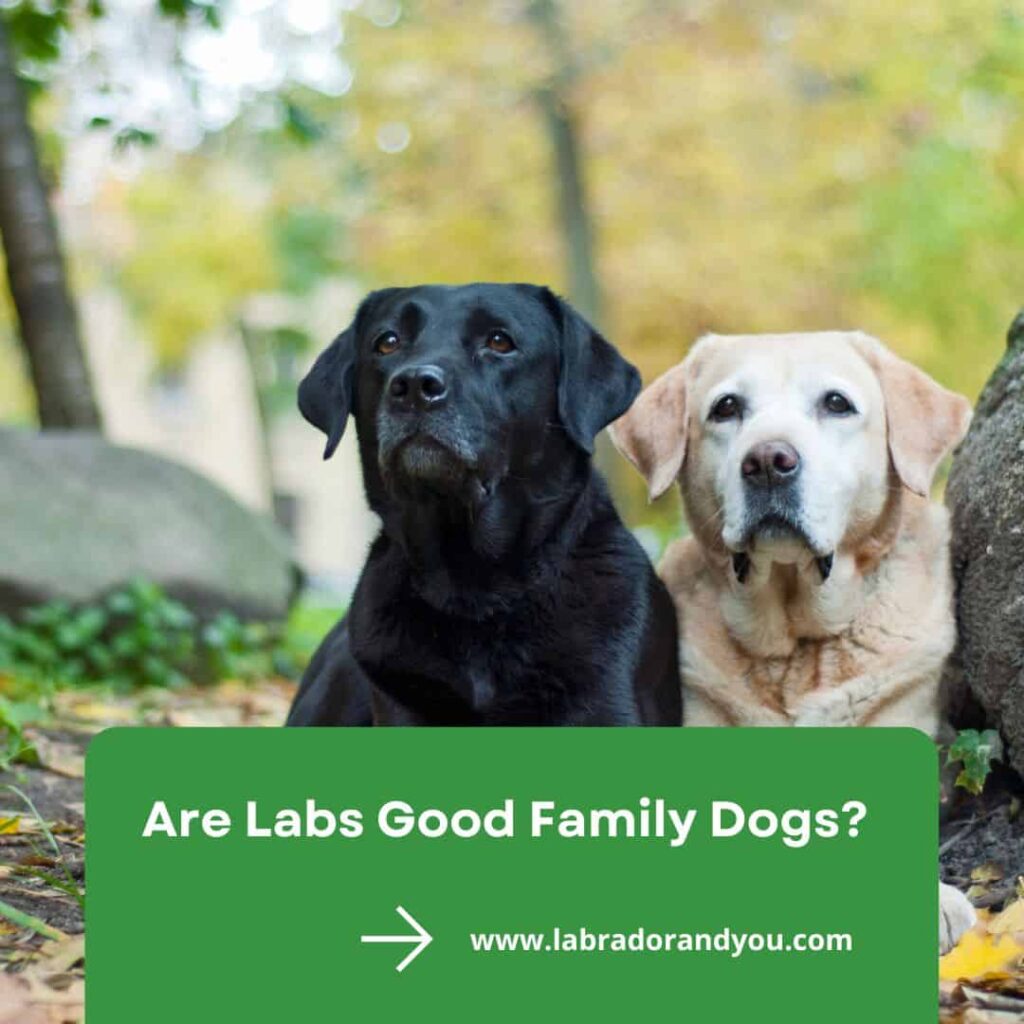Dogs are known for their affectionate behavior. However, have you ever wondered why your dog loves to lay on top of you? From a dog’s perspective, it’s a way to bond with their owner and show their trust and love. But there could be other reasons different dog breeds prefer to snuggle up close. Let’s dive into the reasons behind this cuddly behavior!
Reasons Why Dogs Lay on Top of Their Owners’
For centuries, dogs have been called “man’s best friend.” They are loyal, loving, and protective and have an innate ability to read and understand human behavior. One typical behavior that many dog owners have observed is their dog sleeping on top of them.
Although some may find it strange, it is perfectly normal. There are numerous reasons why dogs exhibit this behavior modification:
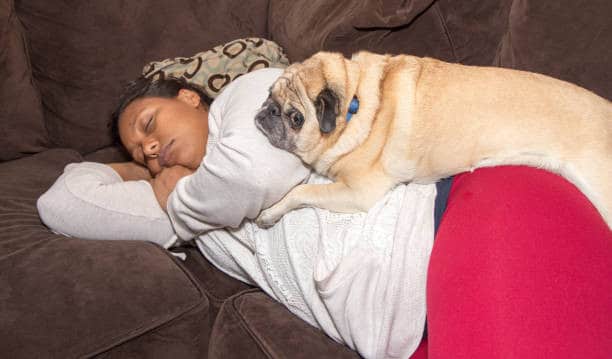
Protective Instincts
Canine companions possess a protective instinct towards their kin and will spare no effort to ensure their security.
Laying on top of their owners is one way they show this defensive behavior. Some of the reasons why dogs lay on top of their owners for protection are:
- Protection from perceived danger: When a dog senses danger, it will try to protect its pet parent by positioning itself on top of them. This protective instinct can be seen in dogs trained to be guard dogs.
- Sense of comfort: Dogs feel more secure and safe when close to their owners. Laying on top of their owners can help them feel protected and give them a sense of comfort.
Affectionate Behavior
The protective instinct isn’t the only reason why your dog lays on top of you. Most dogs are known for their affectionate behavior towards their pet parents. They love to give furry cuddles, lick, and wag their tails to show their love and devotion.
Dog laying on their owners is another way to show their affection. Some reasons why dogs lay on top of their owners for affection are:
- Bonding: Laying on top of their owners can help dogs strengthen their bond with them. It creates a feeling of closeness and intimacy.
- Attention-seeking behavior: Many dogs that crave attention often lay on their owners to get their attention. This attention-seeking behavior is more common in dogs not given enough attention or left alone for extended periods.
Regulating Body Temperature
Dogs regulate their body temperature differently from humans. They rely on panting and sweating through their paw pads to cool themselves down.
However, they may try to regulate their body temperature when dogs lay beside their owners.Some reasons why dogs lay on top of their owners to regulate their body temperature are:
- Warmth: Dogs love warmth, and laying on top of their owners can give them the warmth they need. This behavior is more common in dogs that have less hair. They are prone to feeling cold.
- Cooling down: In some cases, dogs lay on their owners to cool themselves down. This dog’s behavior is to avoid overheating.

Dominance Display
Dogs are pack animals and are instinctive to establish a hierarchy within their pack. Dogs can assert dominance by lying on top of their owners.
Some reasons why dogs lay on top of their owners to show their dominance are:
- Territory marking: By laying on their owners, dogs mark their territory and assert dominance. This behavior is more common in dogs not trained or socialized properly.
- Pack hierarchy: Dog lying on top of their owners can be a way for dogs to establish their position in the pack hierarchy. This behavior is more common in more dominant dogs.
Communication
Dogs utilize body language, barks, and other vocalizations to convey messages to their dog owners. Laying on top of their owners can also be a way for dogs to communicate with them.
Some reasons why dogs lay on top of their owners to communicate are:
- Anxiety or fear: Anxious or fearful dogs may lay beside their owners to communicate their physical discomfort. This behavior is more common in dogs that have separation anxiety. They may want to spend some alone time with their owner.
- Playfulness: Some dogs lie on top of their owners in playful behavior. This behavior is more common in younger dogs or dogs with a more dynamic personality.
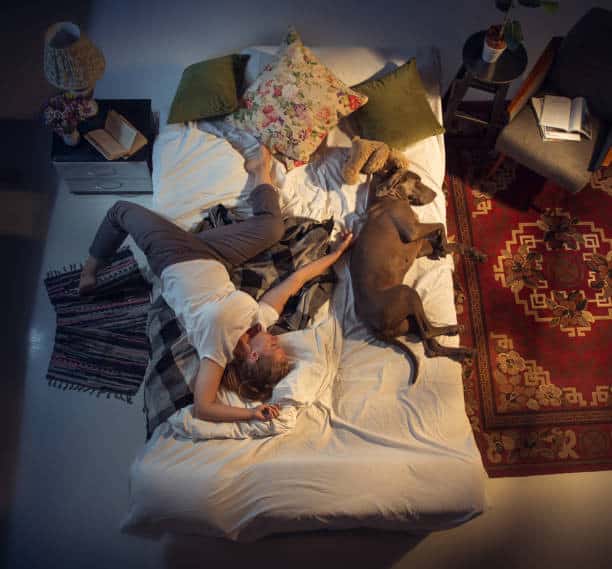
The History of Wild Dog Packs and Its Influence on Current Behaviors
Wild dogs are fascinating animals with unique behavioral patterns shaped by their pack dynamics over time.
Origins of Wild Dog Packs
Wild dog packs have evolved over millions of years, dating back to the ancestors of dogs – wolves. The first wild dog packs likely formed when these early wolves began hunting in groups to take down larger prey.
As their hunting skills developed, so did their pack dynamics. Over time, packs became more organized and developed a social hierarchy, with alpha males and females leading the group.
Pack Dynamics and Behavior
Wild dogs have a complex social structure centered around their pack dynamics. Each pack has its unique hierarchy, with an alpha pair leading the group and subordinate pack members following their lead.
Subordinate members may include other dogs, juveniles, and unrelated individuals. One of the most exciting aspects of wild dog behavior is their cooperative hunting strategy.
The pack will work together to take down prey, each member playing a specific role. This strategy allows them to hunt larger prey they could not take down alone. It also ensures that everyone in the pack gets a share of the meal.
Another behavior that is unique to wild dog packs is their close-knit relationships. Members of the pack will groom each other, play together, and even share food. This bond is crucial to the pack’s survival, ensuring everyone is cared for and protected.
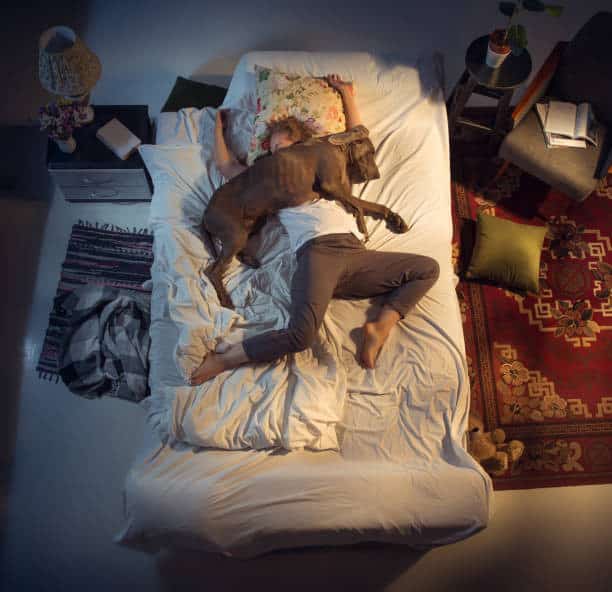
Human Influence on Wild Dog Packs
Unfortunately, humans have significantly impacted wild dog populations over the years. Habitat loss, hunting, and disease have all contributed to the decline of wild dog populations worldwide.
As a result, some packs have become isolated, leading to inbreeding and decreased genetic diversity.
Human-wildlife conflict is another significant issue for wild dog packs. Many packs live near human settlements and risk being killed or captured by humans who view them as threatening livestock or pets.
This conflict can disrupt pack dynamics and mental stimulation and lead to the death of pack members.
How to Stop Your Dog from Laying on Top of You?
It is essential to stop this behavior to ensure a healthy and comfortable relationship with your furry friend. Let us know some practical ways to train to stop your dog from laying on top of you.
Positive Reinforcement Training
Positive reinforcement training is one of the most effective ways to teach your dog new behaviors. This training technique rewards your dog for good behavior and ignores bad behavior. Here are some tips:
- Encourage your dog to lay on the dog bed or mat by rewarding them with dog treats or praise.
- Use a command such as “off” or “down” when your dog tries to climb on top of you, and immediately reward them when they obey.
- Encourage your dog to play with toys or other dogs to redirect their attention.

Crate Training
Crate train is another effective way to stop a dog from laying on you. Dog crate training at an early age can offer security and comfort to den animals and other pets.
To prevent them from laying on you, try these tips:
- Introduce your sweet dog to the crate and gradually extend their time to aid with crate training.
- Place your dog’s favorite toys or treats in the crate to make it a positive experience.
- Teach your dog to enter the crate using verbal cues such as “crate” or “bed.”
Avoid Encouraging the Behavior
Domesticated dogs often lay on their owners for affection. To prevent this, avoid encouraging it. Here are some tips:
- Do not pet or praise your dog when it lay on top of you.
- Avoid making eye contact or speaking to your dog when they are trying to climb on top of you.
- If your dog continues to try and lay on top of you, calmly and gently move them off. Teach them an alternative behavior like lying beside you.
Slowly Moving Your Dog
If your healthy dog lies on top of you persistently, training them to lay next to you instead gradually may be necessary. You should not feel guilty about it.
Here are some tips on how to slowly move your dog off of you:
- Gently push your dog to the side when they try to climb above you. It signals that lying on top of you is unacceptable behavior.
- Do this gently and avoid using any physical force that may scare or harm your dog.
- Move away until the dog lays beside you without climbing.
- Do not force the dog to lay beside you. Start by moving just a few inches away from your dog, gradually increasing the distance.
Another tip to slowly move your dog off you is to give them enough exercise and play games in the dog park. It can help reduce their separation anxiety levels and make them less likely to feel the need to climb on top of you for comfort.
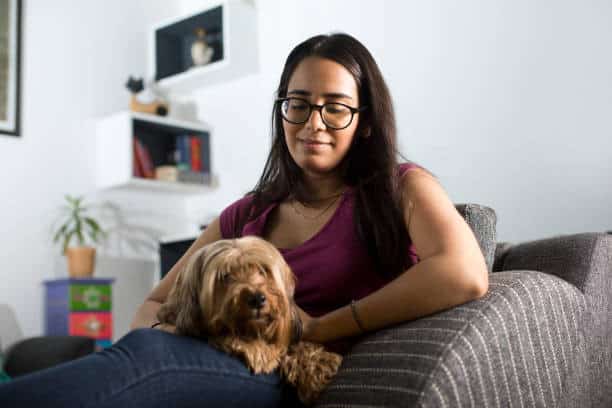
Other Reasons Your Dog Lays on You
We will explore the reasons why your furry friend chooses to snuggle up on you.
Seeking Attention
Dogs are social animals and crave attention from their human owners. They often seek physical touch, including the dog laying on their owners, to feel close and loved.
Some other reasons your dog may lay on you to seek attention are:
- They want to be petted or scratched.
- They want you to play with them.
- They want you to talk to them.
- They want you to give them treats.
If your dog is laying on you for attention, you must ensure you give them the attention they need. Spending quality time daily to play, giving belly rubs, and conversing with your dog will be helpful. Your dog will be happy, and you’ll have a loyal companion.
Comfort and Warmth
Canines adore warmth and comfort. What better spot to cuddle than on their owner’s lap? Your body heat provides warmth and comfort to smaller dogs. They feel safe and secure and snuggled up next to you.
Some other reasons your dog may lay on you for comfort and warmth are:
- They’re feeling cold or anxious.
- They’re feeling insecure or scared.
- They’re feeling sick or in pain.
If your dog is laying on you for comfort and warmth, ensure they’re comfortable and have everything they need.
Provide them with a soft blanket or pillow, and make sure they’re warm enough. If your dog is anxious or scared, try to comfort them and provide them with a safe space.
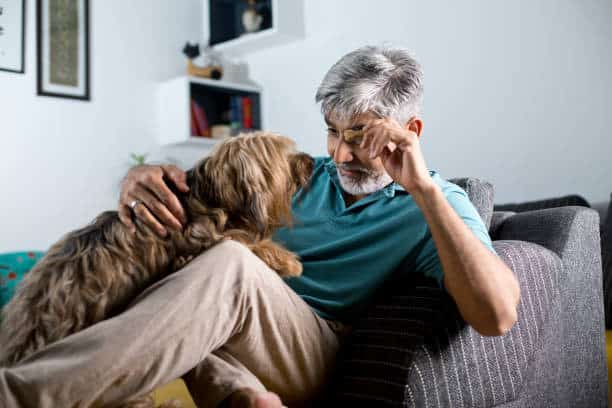
Eye Contact
Dogs are pack animals and communicate with each other through body language, including eye contact. When your dog lays on top of you and makes eye contact, it’s their way of showing affection and trust.
They feel comfortable and secure around you and want to connect with you on a deeper level. If your dog is laying on you for eye contact, ensure you give them the positive attention they deserve.
Look into their eyes, talk to them, and show them affection. Dogs love this gesture. You’ll have a stronger bond with them.
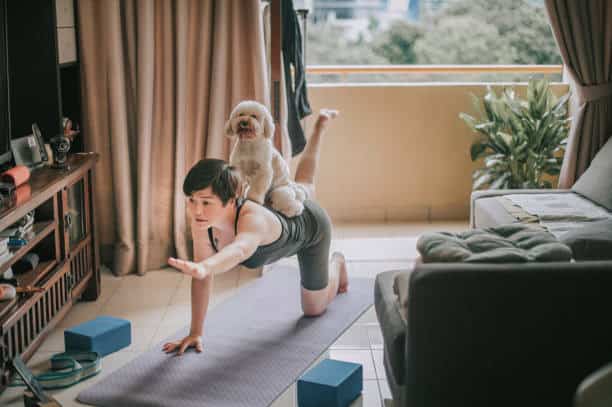
FAQs
Why does my dog go on top of me when I lay down?
Your dog may want to feel close to you, get warmth, comfort, or security, show affection, or assert dominance.
How do you know if your dog is imprinted on you?
If your dog follows you around, greets you happily, seeks your attention and seems more relaxed and content in your presence, it may be imprinted on you.
Why does my dog lay on top of my chest?
Your dog may enjoy your heartbeat, scent, and proximity, feel safer, or want to bond. This behavior can also indicate dominance or guarding.
What does it mean if your dog sleeps on you?
Your dog may feel relaxed and secure near you, want to bond with you or seek warmth and comfort. This behavior can also show possession or guarding.
What does it mean when a dog lays on you?
Your dog may express affection, trust, security, dominance or seek warmth, comfort, or attention. This behavior can also indicate a need for social interaction or a lack of personal space.
Why does my dog always have to be touching me or laying on me?
Your dog may crave physical contact, want to feel close to you, or seek security and comfort. This behavior can also show attachment, dependence, or separation anxiety.
Why does my dog sleep with head on me?
Your dog may find your scent, warmth, or presence soothing or want to establish a physical connection or dominance. This behavior can also indicate trust, affection, or a habit.
How do dogs choose their favorite person?
Dogs may base their preference on familiarity, positive associations, social interaction, training, or personality traits of the humans they live with.
Why do dogs lay their whole body on you?
Your dog may want to feel secure, comfortable, and close to you or show affection, trust, or dominance. The dog suffers with separation anxiety or a need for reassurance.
Do dogs sleep with the alpha human?
Dogs do not have an alpha-human concept. Dogs sleep with whoever they feel comfortable with and have a bond with.
Why does my dog try to smother me?
Your dog may be overexcited, want to show affection, seek attention, or assert dominance. This indicates the behavior of separation anxiety and a need for training and boundaries.
Why does my dog lay on me and not my husband?
Your dog may have a stronger bond or preference for you due to your interaction, personality, or behavior or feel more comfortable with your scent or touch. This behavior may change over time or with training and socialization.
Author Profile
- Site Owner And Dog Lover
-
Aritra, the founder of Labradorandyou.com, is a lifelong dog lover whose passion ignited for Labradors for their loyalty and intelligence. With extensive research and personal experiences, Aritra has become a Labrador expert, offering a rich resource on the breed. Labradorandyou.com provides reliable, timely, and evidence-based information, including Labrador-specific product reviews, training techniques, and care tips.
Labradorandyou.com was born out of Aritra's passion and his desire to share his profound knowledge about the breed. The site serves as a comprehensive resource, offering a wealth of up-to-date information for Labrador owners and enthusiasts alike
Also by the author
-
 Lab-TypesNovember 17, 2023Old Dog Seizures: Causes, Symptoms, and Treatment Options
Lab-TypesNovember 17, 2023Old Dog Seizures: Causes, Symptoms, and Treatment Options
-
 Lab-TypesNovember 17, 2023Why Is My Dogs Poop Yellow? 8 Reasons & Solutions
Lab-TypesNovember 17, 2023Why Is My Dogs Poop Yellow? 8 Reasons & Solutions
-
 ReviewsNovember 17, 2023The Only Hill’s Science Diet Review You Need To Read
ReviewsNovember 17, 2023The Only Hill’s Science Diet Review You Need To Read
-
 Lab-TypesNovember 17, 2023How To Adopt An Emotional Support Dog?
Lab-TypesNovember 17, 2023How To Adopt An Emotional Support Dog?





